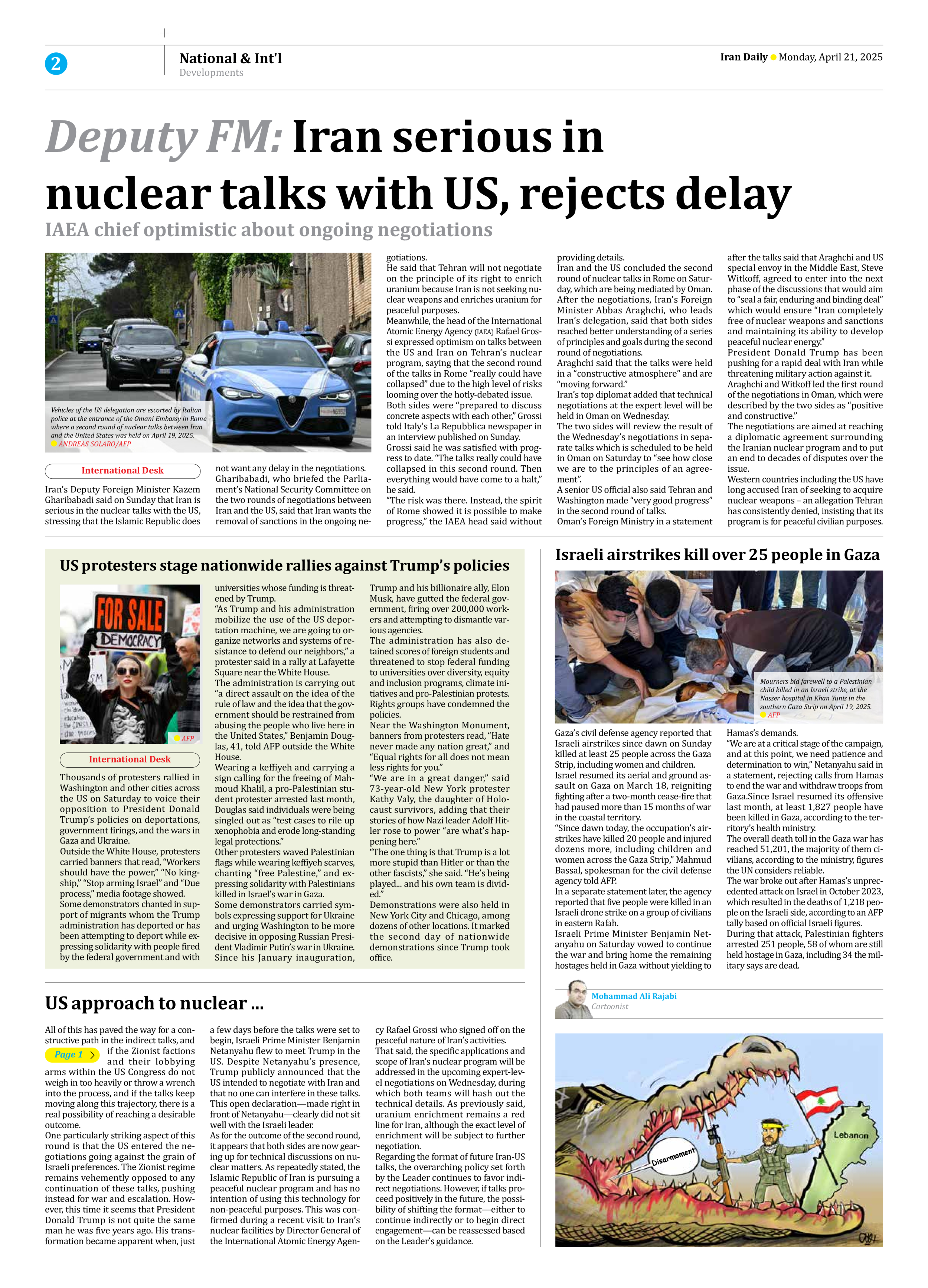
US approach to nuclear ...
Page 1
All of this has paved the way for a constructive path in the indirect talks, and if the Zionist factions and their lobbying arms within the US Congress do not weigh in too heavily or throw a wrench into the process, and if the talks keep moving along this trajectory, there is a real possibility of reaching a desirable outcome.
One particularly striking aspect of this round is that the US entered the negotiations going against the grain of Israeli preferences. The Zionist regime remains vehemently opposed to any continuation of these talks, pushing instead for war and escalation. However, this time it seems that President Donald Trump is not quite the same man he was five years ago. His transformation became apparent when, just a few days before the talks were set to begin, Israeli Prime Minister Benjamin Netanyahu flew to meet Trump in the US. Despite Netanyahu’s presence, Trump publicly announced that the US intended to negotiate with Iran and that no one can interfere in these talks. This open declaration—made right in front of Netanyahu—clearly did not sit well with the Israeli leader.
As for the outcome of the second round, it appears that both sides are now gearing up for technical discussions on nuclear matters. As repeatedly stated, the Islamic Republic of Iran is pursuing a peaceful nuclear program and has no intention of using this technology for non-peaceful purposes. This was confirmed during a recent visit to Iran’s nuclear facilities by Director General of the International Atomic Energy Agency Rafael Grossi who signed off on the peaceful nature of Iran’s activities.
That said, the specific applications and scope of Iran’s nuclear program will be addressed in the upcoming expert-level negotiations on Wednesday, during which both teams will hash out the technical details. As previously said, uranium enrichment remains a red line for Iran, although the exact level of enrichment will be subject to further negotiation.
Regarding the format of future Iran-US talks, the overarching policy set forth by the Leader continues to favor indirect negotiations. However, if talks proceed positively in the future, the possibility of shifting the format—either to continue indirectly or to begin direct engagement—can be reassessed based on the Leader’s guidance.







